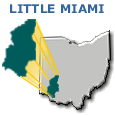RUSLE LS Factor Metadata

GEODATASET NAME: LMR_RUSLELS2
IDENTIFICATION INFORMATION
Description:
LS factor (slope length and steepness factor) as estimated from a series of
Revised Universal Soil Loss Equation (RUSLE) algorithms for the Little Miami
River watershed (HUC catalog unit 05090202) in southwestern Ohio
Abstract:
Draft RUSLE LS factor from RUSLE handbook, as calculated from AML program
by Van Remortel et al. (in press) on NED 30-m DEM data for the Little Miami
River watershed
Data Type:
Grid
Data Originators:
U.S. Geological Survey
National Elevation Dataset
Sioux Falls, SD
and
Rick Van Remortel
Lockheed Martin Environmental Services
980 Kelly Johnson Drive
Las Vegas, NV 89119
(702)897-3295
rvanremo@lmepo.com
Data Processor:
Rick Van Remortel
Lockheed Martin Environmental Services
980 Kelly Johnson Drive
Las Vegas, NV 89119
(702)897-3295
rvanremo@lmepo.com
Data Provider:
Bernie Daniel
U.S. Environmental Protection Agency
National Exposure Research Laboratory
26 W. Martin Luther King Dr. MS-785
Cincinnati OH 45268
(513)596-7401
daniel.bernie@epamail.epa.gov
Keywords:
soil erosion, RUSLE, LS factor, slope length, steepness
Version:
N/A
Status:
Interim
Revision Number:
0
Series Name:
Online Link (URL):
Time Period of Content:
Use Constraints:
The present version of this grid should be considered Draft, for
internal use only at this time
Purpose:
Little Miami River geodata browser website
Date of metadata entry/update:
6/12/2000
No Publication Information Available
No File Security Information Available
DATA QUALITY INFORMATION
Cloud Cover:
Not applicable
Software:
Arc/Info 7.2
Operating System:
Unix
Path Name:
/gis8/l_miami/data/ned/lmr_ruslels2
Logical Consistency Report:
Not presently available
Completeness Report:
Not presently available
Horizontal Positional Accuracy:
Not presently available
Vertical Positional Accuracy:
Not presently available
Attribute Accuracy:
Not presently available
Procedures:
The detailed procedures are contained in a documented AML that can be
obtained from the data provider. Generally, the 30-m input NED DEM is
processed to fill its sinks, flow directions are calculated, slope angles
are enumerated, and slope length is calculated from an intensive iterative
process (Van Remortel et al., in press). RUSLE-based algorithms are
applied to the resulting data to produce a grid of values that are a
factor of 100 times (or 2 orders of magnitude) larger than the LS factor.
This is done to preserve the grid in integer format instead of floating
point.
Reviews Applied to Data
Lockheed Martin internal review
Related Spatial Data Files:
This LS-factor grid is one of five USLE/RUSLE factor grids that are
multiplied together to calculate the A-value of estimated annual soil
erosion. The basic procedure for calculating USLE was developed by
Weischmeier and Smith (1968), and RUSLE was spearheaded by USDA-ARS in
Tucson, AZ (Renard et al., 1997).
Other References Cited:
Renard, K.G., G.R. Foster, G.A. Weesies, D.K. McCool, and D.C. Yoder.
1997. Predicting soil erosion by water: A guide to conservation
planning with the Revised Universal Soil Loss Equation (RUSLE).
Agriculture Handbook No. 703. U.S. Dept. Agr., Agric. Res. Serv.
Van Remortel, R.D., M.E. Hamilton, and R.J. Hickey. In press. Estimating
the LS factor for RUSLE through iterative slope length processing of
digital elevation data. Cartography.
Wischmeier, W.H., and D.D. Smith. 1968. Predicting Rainfall Erosion
Losses: A Guide to Conservation Planning. USDA Handbook No. 537.
U.S. Department of Agriculture, Washington, DC.
Notes:
Update Frequency:
As needed
SPATIAL REFERENCE INFORMATION
Description of Grid lmr_ruslels2
Cell Size = 30.000 Data Type: Integer
Number of Rows = 3919 Number of Values = 2332
Number of Columns = 2248 Attribute Data (bytes) = 16
BOUNDARY STATISTICS
Xmin = 984724.688 Minimum Value = 50.000
Xmax = 1052164.688 Maximum Value = 3848.000
Ymin = 1828894.625 Mean = 107.551
Ymax = 1946464.625 Standard Deviation = 124.533
COORDINATE SYSTEM DESCRIPTION
Projection ALBERS
Datum NAD27
Units METERS Spheroid CLARKE1866
Parameters:
1st standard parallel 29 30 0.000
2nd standard parallel 45 30 0.000
central meridian -96 0 0.000
latitude of projection's origin 23 0 0.000
false easting (meters) 0.00000
false northing (meters) 0.00000
ENTITY AND ATTRIBUTE INFORMATION
Annotation Name:
ATTRIBUTE LISTING FOR: lmr_ruslels2.vat
COLUMN ITEM NAME WIDTH OUTPUT TYPE N.DEC ALTERNATE NAME INDEXED?
1 VALUE 4 10 B - Indexed
5 COUNT 4 10 B - -
9 LS_FACTOR 8 8 N 2 -
METADATA REFERENCE SECTION
FGDC Content Standards for Digital Geospatial Metadata
FGDC Standards Version 6/98 / metadata.aml ver. 1.3 5/21/99
SUPPLEMENTAL METADATA (where available)
Abstract:
The Revised Universal Soil Loss Equation (RUSLE) is designed to
predict long-term average annual soil loss. It was developed primarily for
agricultural situations, but has been more widely applied. The equation
is based on the concept that rainfall patterns across a region set up
characteristic erosion conditions that are mitigated or exacerbated by
soil type, slope, and land cover conditions. The basic equation is:
A = R * K * LS * C * P
where A is long-term average annual soil loss (tons/acre/year), R is
the rainfall erosivity factor, K is the soil erodibility factor, LS is
the slope length/steepness factor, C is cover and management factor, and P
is the support management factor (e.g., strip cropping, buffer-strip
cropping). Over the eastern U.S. R ranges between 75 and 450, and
the other factors (except for some LS) typically range between 0 and 1.

![[logo] US EPA](../gif/logo_epaseal.gif)